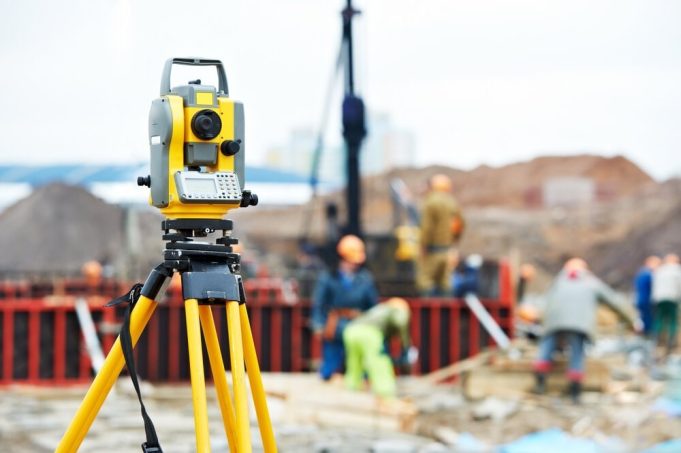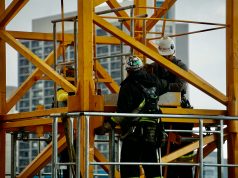A topographic survey is a form of survey that maps the boundaries, characteristics, as well as levels of a site. Topographic surveys are also referred to as land surveys, terrain surveys, and topo surveys. Surveying a site’s topography is an essential part of the planning process for any location, and these surveys need to be finished before more extensive design work can begin.
What are some applications for topographic surveys?
In addition to the fact that professionals such as civil engineers, architects, and planners use topographic surveys to make educated decisions about construction and project management, they are also utilized as a legally binding documents to define the boundaries of a property.
This is the case because topographic surveys provide accurate information about the terrain. Find out more here https://blog.flatworldsolutions.com/what-are-the-key-advantages-of-topographic-mapping/.
What kinds of things are typically examined in topographical surveys?
The components that are surveyed will change according to the specifications of a certain project. Elements such as area boundary lines, buildings and structures, features close to the site, and so on are examples of typical elements. Positions of trees, bushes, and other forms of vegetation, as well as ground heights, curves, and surfaces, are also examples.
What are some of the advantages of conducting topographic surveys?
One of the primary advantages that topographic surveys bring to a variety of projects is that they help with the planning as well as decision-making processes. This is one of the many reasons why topographic surveys are so useful.
A topographic survey will provide accurate land metrics and will give a clear inkling of the arrangements of an existing site. This information can then be used to make decisions regarding the development of new buildings, the re-positioning of current boundaries, as well as the design of drainage channels.
Because every decision made throughout the project has been informed by reliable statistics from the topographic survey, another advantage of topographic surveys would be that they can help save on project time but also reduce the likelihood of costly errors. This is because the data from the topographic survey was collected at the beginning of the project.
Mapping not only supplies core geospatial & geomorphological input, but it also generates the production maps that are used to pre-plan operational site locations. You may rest easy knowing that you will obtain an accurate outcome for the project at hand if you use the services of competent topographical surveyors as soon as possible.
In order to guarantee that customers are satisfied with the final product, experienced engineers and technicians examine every facet of the mapping process. Vector maps that include distances, angles, as well as contour lines to indicate elevations are frequently used by engineers. These include, but are not limited to, things like boundary lines, vegetation, bodies of water, and inhabited places.
“Drones” are currently used for the vast majority of topographic mapping services today. It’s one of the technologies that is utilized in the process of carrying out aerial surveys. Nevertheless, there are some limitations imposed on you in specific locations. Before taking off with the drone, it is essential to consult with professionals in order to obtain the necessary permissions.
How long does it take to conduct a topographic survey?
The length of time needed to do a topo survey is proportional to the size and scope of the planned site as well as the project.
Following the completion of the site survey, it is customarily necessary to allow a few days for the findings to be compiled and communicated. Whenever a greater level of information is necessary for a project, the data will be displayed in either a simple 2D plan or even a 3D AutoCAD drawing. The format used for the presentation of the data will depend on the level of detail that is required for the project. Read more here.
Right-of-way acquisition
A frequent strategy for purchasing land from a third party, be it an organization or an individual, is to acquire a right-of-way. In most situations, one party will give up all of their rights to a piece of property in exchange for an appropriate amount of monetary compensation.
Because the topographic characteristics of the property play such a large part in determining what kinds of activities can be conducted on the land, you will want to investigate any potential problems with the site before making an investment in it.
This is especially important to keep in mind for companies that have their sights set on developing a portion of the land; it would be a waste to spend a few million dollars on land that is ultimately unsuitable for building on.
When installing runoff management systems
The extra water that results from precipitation, irrigation, and snowmelt is referred to as runoff. While some of this water is absorbed by the earth itself, the vast majority of it is drawn by gravity into neighboring water sources. During its trip, the water erodes the landscape before eventually arriving at rivers and lakes, where it replenishes their water supplies.
Even though runoff is a natural event (and in some cases can even be good for the environment), an irrigation system that is not properly maintained can have negative effects. As it travels downhill, runoff water can pick up a wide variety of contaminants, including germs, trash, minerals, and, worst of all, pollutants kike grease, oil, and pesticides.
If you want to buy land, you should probably get a topographic study done first so you can learn about the typical patterns of erosion. Even minor variations in elevation can have a significant impact on the ground; if you are aware of the course the water will take, you will be able to adapt your plans for how you will use the property appropriately.
One illustration of this is the approach that we take to the problem of deforestation. Maps may illustrate where trees have already been cut down, how the landscape has altered as a result, and provide a wealth of insight into how an ecosystem might be brought back to life.














